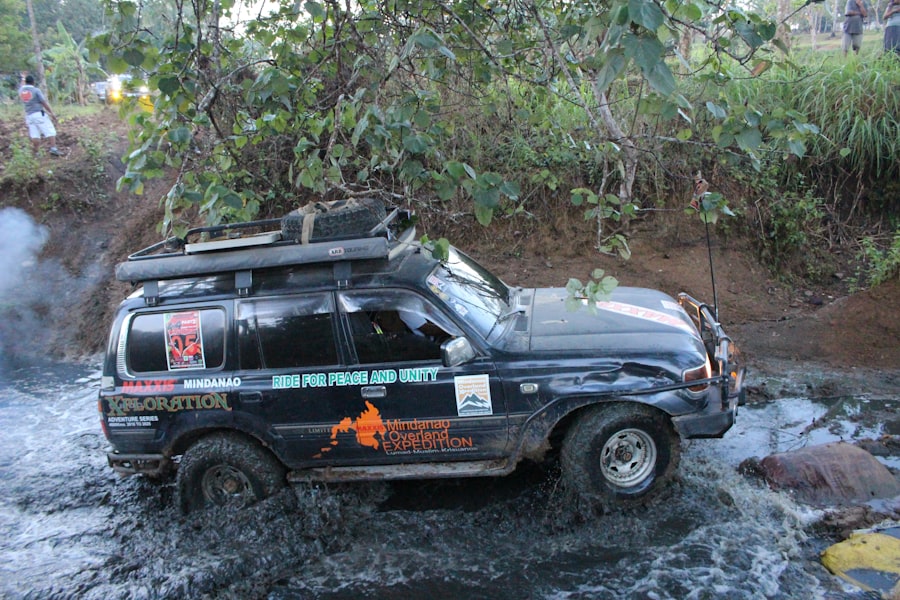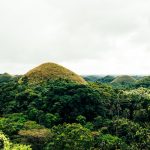Download links
How to install Discover the Stunning fb777 Chocolate Hills APK?
1. Tap the downloaded Discover the Stunning fb777 Chocolate Hills APK file.
2. Touch install.
3. Follow the steps on the screen.
Description
The Chocolate Hills, a geological wonder located in the Bohol province of the Philippines, are a striking natural formation that has captivated visitors and scientists alike. These hills, numbering over 1,200, rise abruptly from the surrounding landscape, creating a surreal and picturesque panorama. The formation of these hills is attributed to a combination of geological processes that took place over millions of years.
Primarily, they are composed of limestone, which was formed from the remains of marine organisms that settled on the ocean floor during the Pleistocene epoch. As tectonic activity lifted this limestone above sea level, erosion began to sculpt the landscape, resulting in the distinctive conical shapes that we see today. The unique topography of the Chocolate Hills is further enhanced by the region’s tropical climate.
During the dry season, the grass that covers these hills turns a rich brown color, giving them their chocolate-like appearance. This seasonal transformation is not just a visual spectacle; it also plays a crucial role in the local ecosystem. The hills are shaped by both natural forces and human activity, as local farmers have historically utilized the land for agriculture.
The interplay between these factors has created a dynamic environment that continues to evolve, making the Chocolate Hills a subject of ongoing geological study and fascination.
Key Takeaways
- The Chocolate Hills were formed by the uplift of coral deposits and the action of rainwater and erosion over millions of years.
- The viewing deck offers a stunning panoramic view of the 1,268 cone-shaped hills, which turn brown during the dry season, resembling chocolate kisses.
- According to local legend, the hills were formed from the tears of a giant who fell in love with a mortal woman and wept until the hills formed.
- The Chocolate Hills are home to a variety of plant and animal species, including the endangered Philippine tarsier and various orchid species.
- Visitors can enjoy activities such as hiking, zip-lining, and ATV rides in the surrounding area, as well as visit nearby attractions like the Tarsier Conservation Area and Butterfly Sanctuary. Conservation efforts are in place to protect the unique geological formation and its surrounding ecosystem, including reforestation and sustainable tourism practices.
The Breathtaking View from the Viewing Deck
The Surrounding Environment
The air is filled with the sounds of nature, including birds chirping, leaves rustling in the gentle breeze, and the distant murmur of streams. As visitors take in the view, they may also notice how the hills appear to change color throughout the day, from vibrant greens in the morning to deep browns at dusk.
A Dynamic Visual Experience
This dynamic visual experience makes each visit unique, encouraging guests to return and witness the hills in different seasons and times of day. The viewing deck serves not only as a vantage point but also as a gathering place for tourists and locals alike, fostering a sense of community and shared appreciation for this natural marvel.
A Sense of Community
The viewing deck is more than just a spot to take in the view; it’s a place where people come together to appreciate the beauty of the Chocolate Hills. Whether you’re a local or a tourist, the deck offers a sense of community and shared wonder, making it a must-visit destination for anyone looking to experience the natural beauty of the Philippines.
The Legend of the Chocolate Hills

The Chocolate Hills are steeped in local folklore, with various legends attempting to explain their origin. One of the most popular tales involves two giants named Arogo and Datu Makunat. According to this legend, Arogo was a giant who fell in love with a mortal woman named Aloya.
When Aloya passed away, Arogo was heartbroken and wept for days on end. His tears formed into hills as they fell to the ground, creating what we now know as the Chocolate Hills. This poignant story not only adds a layer of cultural significance to the landscape but also reflects the deep connection between the people of Bohol and their natural surroundings.
Another version of the legend tells of a fierce battle between two giants who hurled boulders at each other in a fit of rage. After their conflict ended, they left behind a landscape littered with rocks and debris. Over time, nature took its course, and these remnants transformed into the rolling hills we see today.
Such legends serve to enrich the visitor experience, providing a narrative that connects them to the local culture and history. They also highlight how natural phenomena can inspire stories that resonate through generations, illustrating humanity’s enduring fascination with nature’s mysteries.
The Flora and Fauna of the Chocolate Hills
| Category | Metrics |
|---|---|
| Flora | Over 1,200 plant species |
| Fauna | Various species of birds, mammals, and reptiles |
| Endemic Species | Several endemic species found only in the Chocolate Hills region |
| Conservation | Efforts to protect and preserve the unique flora and fauna of the area |
The Chocolate Hills are not just remarkable for their geological features; they also host a diverse array of flora and fauna that thrive in this unique environment. The hills are primarily covered with grasslands, which provide habitat for various species of birds and small mammals. Among these are endemic species such as the Philippine tarsier, one of the world’s smallest primates, known for its large eyes and nocturnal habits.
These creatures play an essential role in maintaining ecological balance within their habitat. In addition to wildlife, the vegetation on the Chocolate Hills includes several species of grasses and shrubs that adapt well to the region’s climate.
This seasonal diversity not only enhances the visual appeal but also supports pollinators like bees and butterflies that are crucial for plant reproduction. The interplay between flora and fauna creates a rich tapestry of life that contributes to the overall health of this ecosystem.
Activities and Attractions in the Surrounding Area
The area surrounding the Chocolate Hills offers a plethora of activities and attractions that cater to various interests. For adventure seekers, there are opportunities for hiking and biking along designated trails that wind through the hills and surrounding countryside. These trails provide not only physical challenges but also stunning views of the landscape from different angles.
Guided tours are available for those who wish to learn more about the geological history and ecological significance of this area while enjoying an active day outdoors. For those interested in cultural experiences, nearby towns offer insights into local traditions and crafts. Visitors can explore local markets where artisans sell handmade goods, including traditional textiles and handicrafts.
Additionally, cultural performances showcasing traditional music and dance provide an immersive experience into Boholano culture. Families can also enjoy attractions such as butterfly sanctuaries or eco-parks that promote environmental awareness while providing fun activities for children. The combination of natural beauty and cultural richness makes visiting the Chocolate Hills an enriching experience for all.
Conservation Efforts for the Preservation of the Chocolate Hills

Sustainable Tourism Practices
Initiatives have been launched to promote sustainable tourism practices that minimize human impact on the environment.
Education and Community Engagement
Educational campaigns are being implemented to raise awareness about the importance of protecting the Chocolate Hills among both locals and visitors. Schools in nearby communities are incorporating lessons on environmental stewardship into their curricula, fostering a sense of responsibility among young people toward their natural heritage. By engaging local communities in conservation efforts, stakeholders hope to create a sustainable model that balances tourism with ecological preservation.
A Collaborative Approach to Conservation
This collaborative approach not only protects the Chocolate Hills but also enhances community pride and involvement in safeguarding their natural environment. In conclusion, the ongoing efforts to preserve this unique landscape ensure that it will continue to inspire awe in future generations while providing valuable lessons about our relationship with nature.
If you’re interested in exploring more unique and fascinating destinations like the Chocolate Hills, you may want to check out this article on the B612 Selfiegenic Camera 2. This innovative camera is perfect for capturing all your travel memories in stunning detail. With its advanced features and user-friendly design, you’ll be able to take amazing selfies and photos wherever your adventures take you. Click here to read more about this must-have travel accessory.
FAQs
What are the Chocolate Hills?
The Chocolate Hills are a geological formation in the Bohol province of the Philippines. They are made up of around 1,268 cone-shaped hills, which are covered in green grass that turns brown during the dry season, giving them the appearance of chocolate kisses.
How were the Chocolate Hills formed?
The exact formation process of the Chocolate Hills is still a subject of debate among geologists. However, it is widely believed that they are the result of the uplift of coral deposits and the action of rainwater and erosion over millions of years.
What is the best time to visit the Chocolate Hills?
The best time to visit the Chocolate Hills is during the dry season, which typically runs from late November to May. This is when the grass covering the hills turns brown, giving them their chocolate-like appearance.
Are there any activities to do at the Chocolate Hills?
Visitors to the Chocolate Hills can enjoy activities such as hiking, bird watching, and taking in the panoramic views from the viewing deck. There are also ATV tours and zip-lining options available for those seeking a more adventurous experience.
Is there an entrance fee to visit the Chocolate Hills?
Yes, there is an entrance fee to visit the Chocolate Hills. The fee helps with the maintenance and preservation of the area.





